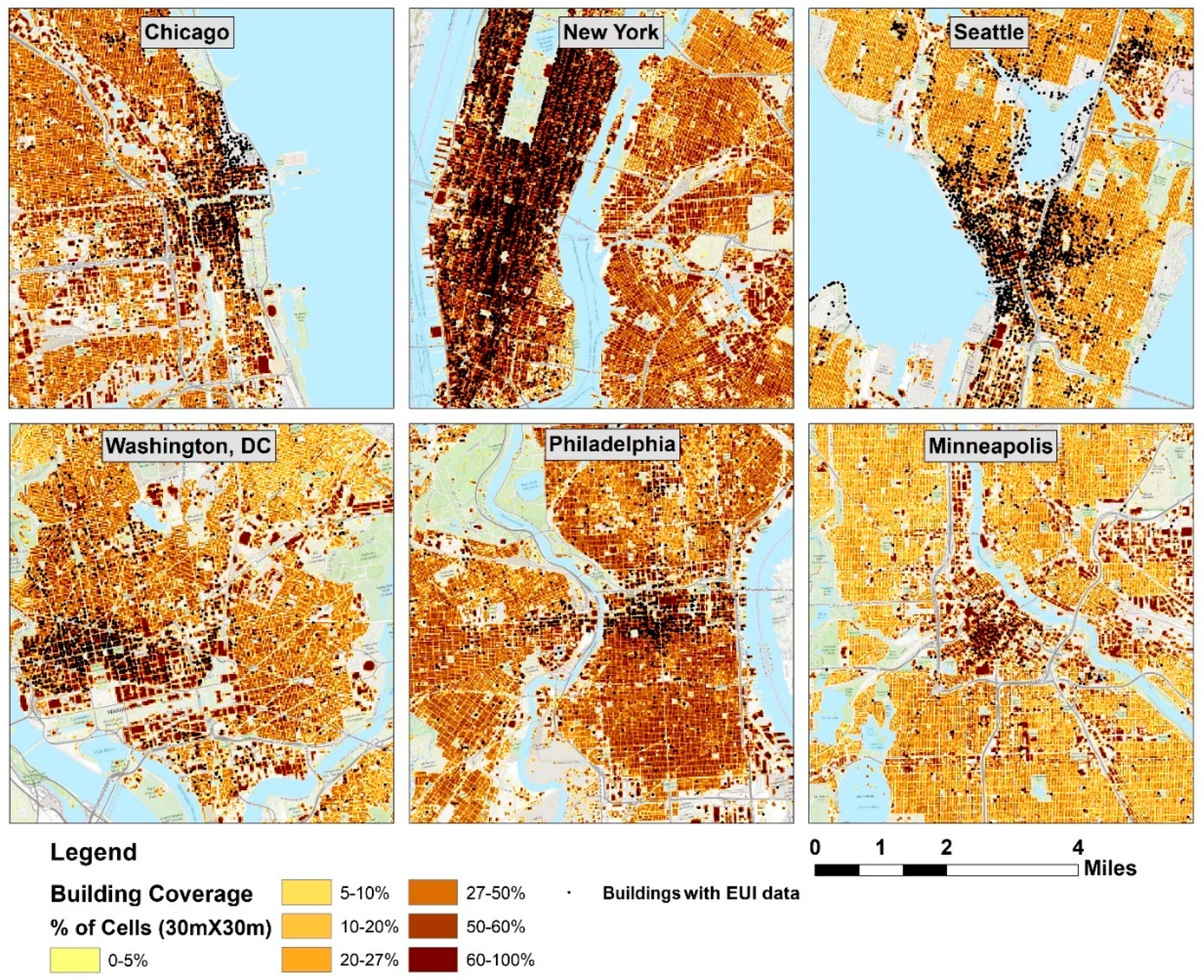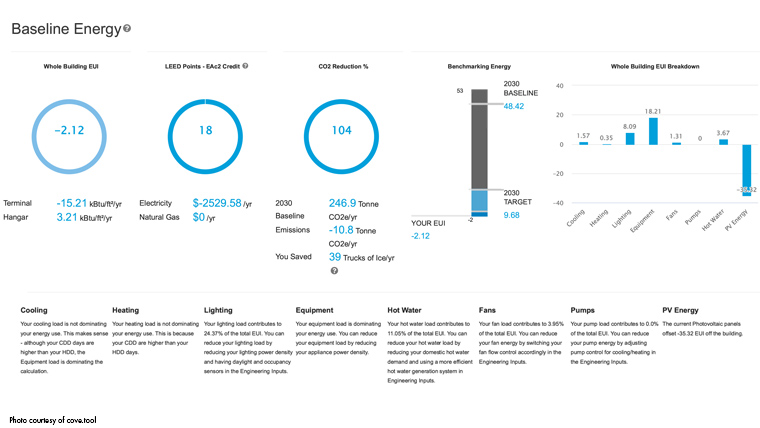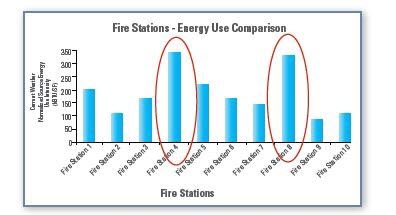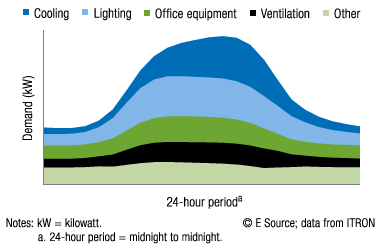Describes a Building's Energy Use Per Square Foot
Building Energy Codes Program and subsequently used in the development of the commercial. The analysis found that in certified buildings tenants average electricity consumption per square meter of leased area was 150 kWhm2 a figure only marginally less than the energy consumption of non-certified buildings of 159 kWhm2.

Buildings Free Full Text The Relationship Between Urban Density And Building Energy Consumption Html
Table 421 Normalized Energy Use per Ton by Climate for Water-Cooled Air Conditioners.

. Facility Fleet Optimization. Buildings types that are more likely to contain specialized high energy-consuming equipmentfood service cooking and ventilation equipment inpatient health care medical equipment and food sales refrigeration were the most energy-intensive types all using at least twice as much energy. According to the US.
For example a 600000 square-foot office campus divide by the appropriate rate 600 square feet per office job is estimated to have about 1000 jobs. An energy budget for a building is best described as. The Warren-Alquist Act requires performance standards that establish an energy budget for the building in terms of energy consumption per square foot of floor space.
In the last stage of the consumption and expenditures data release we will publish detailed tables and microdata. Electricity1 Heating 800 Other 1158 Computers and Electronics 235 Drying 068 Refrigeration 255 Water Heating 354 Lighting 435 Ventilati on 161 Cooling 384 2014 Residential and Commercial Building Primary Energy Use Quads Total primary energy use in buildings. You can see the breakdown on how energy is used here A food service facility consumes approximately 56 kWhsquare foot a retail mall 23 a public assembly building 15 and a warehouse 9.
The house has 2000 square feet of living space. Energy Use Intensity Energy consumption divided by the number of square feet in a building often expressed as British Thermal Units per square foot or kilowatts-hours of electricity per square foot per year. Energy Efficiency in Laboratories.
A 600000 square-foot warehouse appropriate rate 1500 square feet for warehouse jobs is estimated to have 400 jobs. Track changes in energy use metrics. Bar chart with 14 bars.
Non-residential buildings are on average 40 more energy intensive than residential buildings 250 kWhm 2 compared to 180 kWhm 2. Provide a high-level view of energy use for all stores. One cubic foot of natural gas supplies 1000 BTUs of heat energy.
Building Envelope Reduces Overall Energy Costs Off Cost of System Lighting. The first two comprise the high-level analysis we propose and will often suffice for a broad characterization of the multiunit operators. Detailed tables include consumption and expenditures data by energy source in total per building and per square foot by categories such as building floorspace principal building activity year constructed and census division.
The Federal Energy Management Program FEMP encourages energy efficiency in laboratories. Italy Malta and Estonia use by far the largest amount of energy per m² more than 15 time higher than the EU average. Identify stores with high and low energy use.
Laboratories on average use far more energy and water per square foot than office buildings and other facilities because their activities are energy-intensive and their health and safety requirements are more stringent. The benchmarking procedure has three major steps. Figure 51 Buildings Use More Than 38 of all US.
Kilowatt-hours is multiplied by 3412 to obtain kBTUs therefore 1170000 3412 3992040 kBTUs. Building floor space by the space utilization rates. 2 Energy use per square foot of space T he services demanded of buildings lighting warmth in the winter cooling in the summer water heating electronic entertainment computing refrigeration and cooking require significant energy use about 40 quadrillion Btu quads per year.
Energy Use Intensity Calculation What Affects a Buildings EUI. Fossil Fuel Energy derived from ancient organic remains such as peat coal crude oil and natural gas. As for residential buildings energy consumption per m² in services is heterogeneous.
For property types in Portfolio Manager EUI is expressed as energy per square foot per year. This requires a complex calculation of the estimated energy consumption of the building and the calculation is only suited for a computer. Its calculated by dividing the total energy consumed by the building in one year measured in kBtu or GJ by the total gross floor area of the building measured in square feet or square meters.
Eligible Systems Qualification Tax Deduction Warehouses Apartment buildings minimum. A a design target perhaps mandatory in Btusquare feetyear b the total annual cost of electricity including energy and demand charges c a criterion used with green buildings but not with conventional buildings. Department of Energy the average number of kilowatt hours per square foot for a commercial building is approximately 225.
Up to 24 cash back The measurement of EUI is the amount of energy consumed measured in Thousands of British Thermal Units MBTUs and divided by the gross conditioned area in square feet. 1 Public buildings. 50 percent 180 per square foot.
The Energy Use Index is the most common means of expressing the total energy consumption for a building and provides information similar to average gas mileage of your car. Percent 060 per square foot. Natural gas is available at a cost of 500 per thousand cubic feet.
What is Energy Use Intensity EUI. Energy and 76 of US. Energy use by type of US.
For government buildings one of the best applications for DCV are auditoriums and cafeterias in school buildings and large meeting rooms in city buildings which all have very variable occupancy. A technology alert published by the Federal Energy Management Program quoted savings of 05 - 100 per square foot so a pretty wide range. The furnace is 80 efficient.
This is divided by the total square footage of 25500 square feet for an Energy Use Intensity of 3992040 25500 15655 kBTUsfyear. Natural gas was the source of 32 of total energy end-use consumption in commercial buildings in 2012. This chapter describes the energy use analysis for water-cooled and evaporatively cooled.
Major Fuel Consumption per Square Foot by Building Type. 80000 BTUs of heat per square foot are required to heat the house for the winter. Electricitys 3 share of total energy end-use consumption in commercial buildings increased from 38 in 1979 to 61 in 2012.
Portfolio Manager automatically does the. 2 3. Percent 120 per square foot.

Analyze Benchmarking Results Energy Star

No comments for "Describes a Building's Energy Use Per Square Foot"
Post a Comment